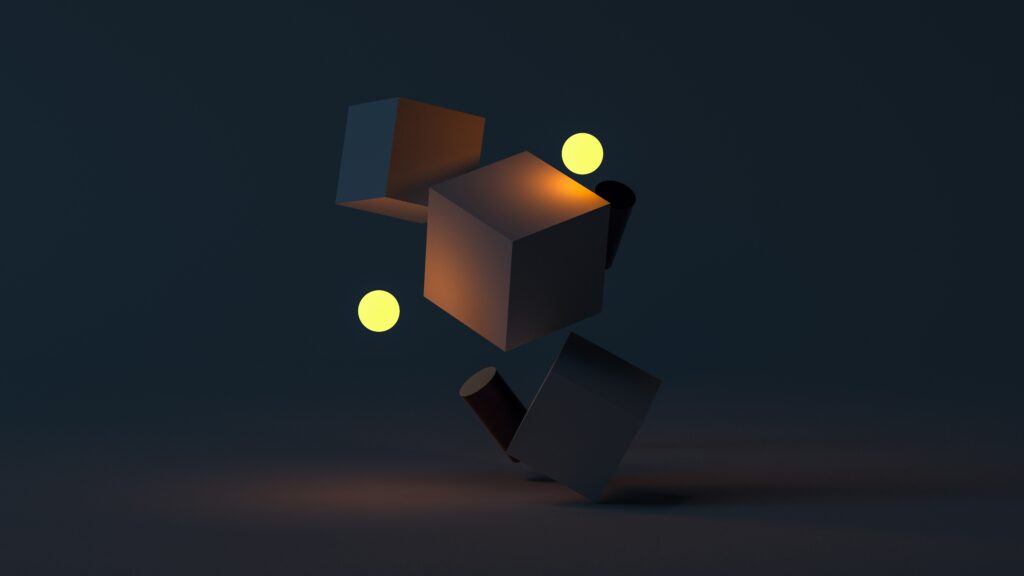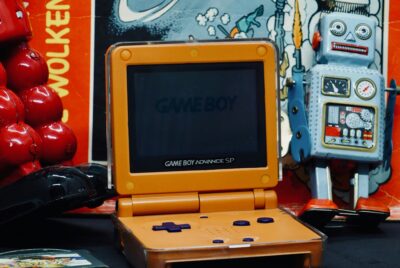What Is The Role Of 3D Modeling In Game Development?
As we delve into the fascinating world of game development, it’s clear that 3D modeling plays an instrumental role in bringing our virtual universes to life. From character design to environment creation, 3D models provide the framework that makes our games visually stunning and immersive. At every turn, these digital sculptures shape how we interact with, explore, and enjoy our favorite games. They are the foundation upon which designers build engaging stories and captivating adventures. Let’s explore just how vital 3D modeling is in shaping the gaming experiences we all cherish. Have you ever played a video game and been awed by the lifelike characters or the intricately designed environments? If so, you’ve already witnessed the wonders of 3D modeling in game development. But what exactly is the role of 3D modeling in crafting these immersive virtual worlds we love so much?

Introduction to 3D Modeling in Game Development
3D modeling serves as the foundation for creating visuals in modern video games. It’s the art and science of developing three-dimensional representations of objects, characters, and environments using specialized software. Unlike traditional 2D graphics, 3D offers depth, allowing for more realistic and immersive experiences.
3D modeling is not just about making beautiful graphics; it ensures realism, supports gameplay mechanics, and is closely tied with other aspects of game design such as animation and rendering. Let’s dive deeper into this fascinating topic.
The Basics of 3D Modeling
Before we explore its role, it’s essential to grasp the fundamentals of 3D modeling. This includes understanding how models are created, the tools used, and the different techniques employed.
What Is 3D Modeling?
3D modeling is the process of developing a mathematical representation of any three-dimensional surface of an object via specialized software. The result is called a 3D model, which can then be used in various contexts, including games, movies, and simulations.
Software Used for 3D Modeling
Numerous software options exist for 3D modeling, each catering to different needs and levels of expertise. Here are some of the most popular tools:
| Software | Description |
|---|---|
| Blender | Open-source and free-to-use. Great for beginners and professionals. |
| Autodesk Maya | Industry-standard tool often used in AAA game development and movie studios. |
| ZBrush | Specializes in detailed 3D sculpting and texturing. |
| 3ds Max | Another favorite in the industry, excellent for both modeling and animation. |
| Cinema 4D | User-friendly and widely used in both gaming and graphic design. |
Techniques in 3D Modeling
There are several methods of creating 3D models, each with its benefits and drawbacks. The main techniques include:
- Polygonal Modeling: Involves creating a mesh of polygons. It’s versatile and commonly used for creating various game assets.
- NURBS Modeling: Uses mathematical formulas to create curves and surfaces. Ideal for precise, smooth surfaces.
- Digital Sculpting: Mimics traditional sculpting by manipulating objects with virtual tools. Perfect for detailed characters.
- Procedural Modeling: Uses algorithms to automatically generate models, useful for large environments and landscapes.
The Role of 3D Modeling in Various Stages of Game Development
3D modeling is integral to multiple stages of game development, from concept art to the final rendering. Here’s how it fits into the entire process.
Conceptualization and Prototyping
Before any 3D modeling begins, there’s usually a phase of conceptualization where ideas are brainstormed and rudimentary sketches are made. Here, 3D modeling tools can aid in visualizing concepts more vividly.
- Concept Art: Artists create concept art to showcase the look and feel of characters and environments. These 2D images serve as the groundwork for 3D models.
- Prototyping: Basic 3D models (whiteboxes) are created to test gameplay mechanics and level design without detailed textures.
Character and Environment Design
Characters and environments are the heart and soul of any game, requiring detailed and meticulous 3D modeling to bring them to life.
Character Modeling
Character modeling involves creating the 3D avatar of the character, with a focus on replicating human anatomy or other fantastical designs.
- Anatomical Accuracy: Artists often study anatomy to create realistic human or creature models.
- Texturing and Shading: Adding textures and shaders to models helps in detailing skin, clothing, armor, and other aspects.
- Rigging: Setting up a character’s skeleton so it can be animated.
Environment Modeling
Unlike character modeling, which focuses on organic shapes, environment modeling deals with inanimate objects and landscapes.
- Terrain and Landscapes: Large-scale modeling of terrains, forests, mountains, etc.
- Architectural Elements: Buildings, bridges, and other structures are designed.
- Props and Interactables: Items that players can interact with, such as furniture, weapons, or vehicles.
Animation and Rigging
Once the 3D models are created, they often need to be animated. Rigging is the process of setting up a skeleton for 3D models so they can move; animation is the art of making those movements look lifelike.
- Skinning: Binding the 3D model to the rig so that movement affects the model accurately.
- Keyframing: Defining the movement by setting up key poses that the character transitions between.
- Motion Capture: Using technology to capture real-life movement and applying it to 3D models.
Integration into Game Engine
After models are created and animated, they need to be imported into the game engine where they will become part of the interactive world.
- Optimization: Ensuring models are optimized for real-time rendering to maintain performance.
- Shaders and Lighting: Applying shaders and setting up lighting to achieve the desired visual effects.
Challenges and Considerations in 3D Modeling for Games
3D modeling while seemingly straightforward, involves several challenges and considerations to ensure the result is both visually appealing and functional within the game engine.
Performance vs. Detail
A common challenge in game development is finding the balance between detailed, high-quality models and performance. More detailed models can be resource-intensive, possibly reducing a game’s frame rates or causing lag.
UV Mapping and Textures
While creating a 3D model is essential, it’s equally important to map textures correctly using UV mapping. UV mapping is the 3D modeling process of projecting a 2D image texture onto a 3D model’s surface.
LOD (Level of Detail)
To optimize performance, various levels of detail (LOD) models are created. These are simplified versions of the high-detail models used when the object is far from the player and thus, detail isn’t as necessary.
Keeping Up with Trends and Technologies
The field of 3D modeling is constantly evolving, with new techniques and technologies emerging regularly. Staying up to date is crucial for producing top-notch, cutting-edge content.

Example: The Evolution of 3D Modeling in Popular Games
To illustrate the importance and evolution of 3D modeling in game development, let’s take a glance at a couple of iconic game franchises.
The Legend of Zelda
The Legend of Zelda series has seen significant evolution in its 3D modeling from Ocarina of Time to Breath of the Wild.
- Ocarina of Time (1998): Utilized basic polygonal models due to limited hardware capabilities.
- Twilight Princess (2006): Improved textures and character modeling.
- Breath of the Wild (2017): Features detailed environments and realistic character models, leveraging cutting-edge 3D modeling techniques.
Grand Theft Auto
The Grand Theft Auto franchise also showcases 3D modeling advancements.
- GTA III (2001): Early 3D models with limited detail and animation.
- GTA V (2013): Highly detailed character and environment models, realistic textures, and high-quality motion capture animations.
Future of 3D Modeling in Game Development
As we look to the future, the role of 3D modeling in game development is poised to grow even further. Advancements in technology, including real-time ray tracing, AI-driven optimizations, and VR/AR integrations, are set to revolutionize the field.
Real-Time Ray Tracing
Ray tracing technology allows for more realistic lighting and shadows, enhancing the visual fidelity of 3D models. Real-time ray tracing has become more feasible with modern GPUs.
AI and Machine Learning
AI can aid in automating certain aspects of 3D modeling, such as generating textures or tweaking animations, thereby speeding up the development process.
Virtual and Augmented Reality
VR and AR depend heavily on high-quality 3D models to create immersive experiences. As these technologies develop, the demand for proficient 3D modeling will rise.

Conclusion
3D modeling is an indispensable part of game development, bridging the gap between imagination and reality. It involves a variety of skills and techniques, from character and environment design to texturing and animation, all working in harmony to create the engaging, lifelike worlds that captivate players.
As technology continues to evolve, the capabilities and applications of 3D modeling in game development will expand, opening up new vistas for creativity and innovation. So, the next time we marvel at a game’s graphical splendor, we’ll appreciate the intricate 3D modeling work that made it all possible.
Thank you for journeying with us through the fascinating world of 3D modeling in game development. Whether you’re a gamer, developer, or just curious, we hope this article has shed light on the vital role 3D modeling plays in crafting the video games we adore.




